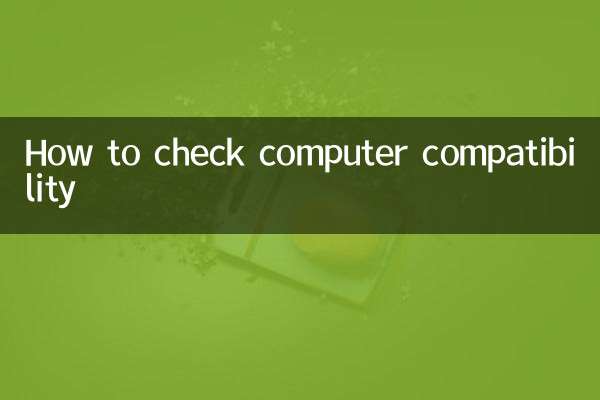How to solve the memory module alarm
Memory module alarm is one of the common problems in computer hardware failure. It usually manifests as a "beep" sound when starting up or no display on the screen. This article will provide you with detailed solutions based on the hot topics and hot content on the Internet in the past 10 days.
1. Reasons for memory module alarms

Memory module alarms are usually caused by the following reasons:
| Reason | Description |
|---|---|
| Poor memory module contact | The memory module is not fully inserted into the slot or the gold finger is oxidized. |
| Memory module is damaged | Physical damage or circuit failure |
| Motherboard slot failure | Loose slot or circuit problem |
| Insufficient power supply | Insufficient power supply causes memory to not work properly |
| BIOS setting error | Improper memory frequency or voltage setting |
2. Steps to solve the memory module alarm
The following are detailed steps to resolve memory module alarms:
| steps | Operation |
|---|---|
| 1. Check the memory module installation | After shutting down, re-insert the memory module and make sure it is fully inserted into the slot. |
| 2. Clean gold fingers | Use an eraser to gently wipe the gold finger of the memory stick to remove the oxide layer |
| 3. Replace the slot | Try inserting the memory module into another slot to troubleshoot the slot. |
| 4. Test a single memory | Test each memory one by one to find the faulty memory |
| 5. Reset BIOS | Enter BIOS to restore default settings or clear CMOS |
| 6. Check the power supply | Make sure the power supply is sufficient and replace the power supply if necessary |
3. Frequently Asked Questions
According to the hot topics in the past 10 days, the following are the issues that users are most concerned about:
| question | Answer |
|---|---|
| What does the memory module alarm sound mean? | Different brands of BIOS alarm sounds have different meanings. Usually a long beep or a short continuous beep indicates a memory failure. |
| Can I still power on after the memory module alarms? | In some cases, it can be booted, but a blue screen or system instability may occur. |
| How to determine whether the memory module is damaged? | Test through memory testing software (such as MemTest86) or change to another computer |
| Is the memory module alarm related to the graphics card? | Usually irrelevant, but graphics card failure may also cause similar phenomena, so you need to pay attention to the distinction. |
4. Measures to prevent memory module alarms
In order to avoid the recurrence of the memory module alarm problem, it is recommended to take the following preventive measures:
| measures | Description |
|---|---|
| Regular cleaning | Clean the dust inside the case every six months to keep the memory modules clean |
| Avoid frequent plugging and unplugging | Reduce unnecessary insertion and removal operations of memory modules |
| Use anti-static measures | Touch metal objects to release static electricity before operating memory modules |
| Choose a high-quality power supply | Use brand power supply to ensure stable power supply |
| Update BIOS | Regularly check and update the motherboard BIOS to improve compatibility |
5. Summary
Although memory module alarms are common, in most cases they can be solved with simple operations. The solutions provided in this article cover all levels from basic inspection to professional testing, helping you quickly locate and solve problems. If the problem is not resolved after trying all methods, it is recommended to contact professional maintenance personnel or replace the hardware.
Remember, patience and care are paramount when dealing with hardware issues. I hope this article can help you successfully solve the problem of memory module alarm!

check the details

check the details